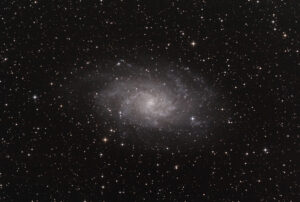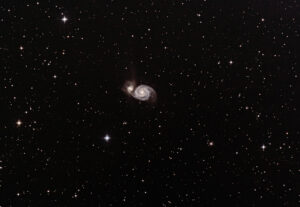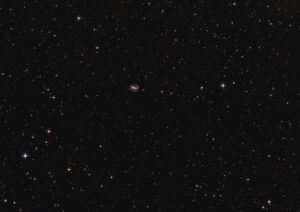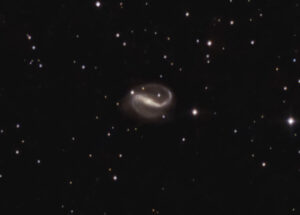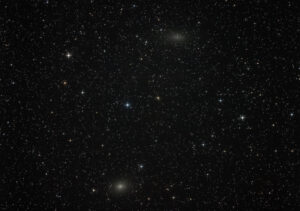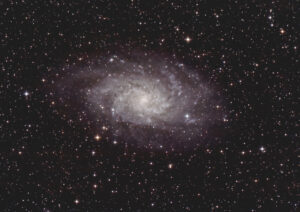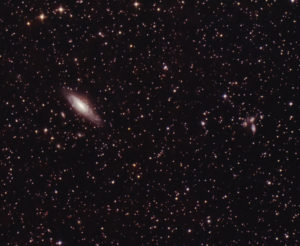Finally had a nice clear, dark and cold night perfect for astrophotography. I found M106 in the eastern sky and this image is composed of 38 frames at 300 seconds each making an integrated total of 3 hours and 10 minutes. This was a very good long run with some nice tracking.
This galaxy is 24 million light years away and it is one of the closest galaxies with a super massive black hole at the core. It became an important object for calibrating distances in space because of unique properties. This gets way to technical for me to follow but it has a rich history in astrophysics and deep space research.
From the net:
“Today, astronomers know that the power source is a disk of hot gas around a supermassive black hole. And one of the nearest of these “Seyfert galaxies” is M106, at a distance of just 24 million light-years.
Astronomers have used radio telescopes to draw a detailed map of the galaxy’s accretion disk. Water molecules at the edge of the disk are pumped up by the disk’s energy, creating bright spots known as masers. The masers trace the disk’s size (about two light-years in diameter) and its motion around the central black hole (speeds of about one million miles per hour at the outer edge of the disk). The masers also show that the disk is warped like the brim of a hat, which one side turned up a little, and the other turned down.
From the masers and the motions of stars near the core, astronomers have measured the mass of the black hole at roughly 24 million to 38 million times the mass of the Sun.
Magnetic fields generated by the rapidly spinning disk accelerate some of its hot gas to almost the speed of light and shoot it back into space in the form of two jets, which produce radio waves and other forms of energy. The disks shoot out into space from the black hole’s poles, so they are perpendicular to the plane of the disk.”
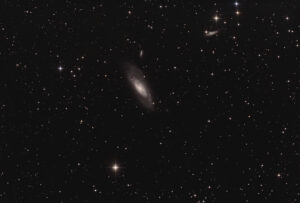
Prior image from 2020


